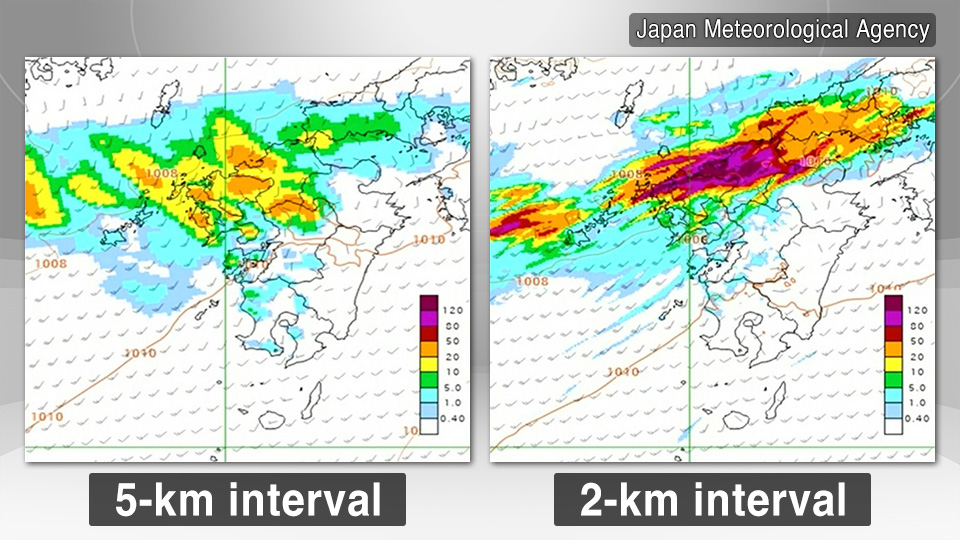Ships monitor vapor amounts that could form bands of heavy rain clouds
Rising warm air with accumulated sea water vapor can generate a series of cumulonimbus clouds.

The agency uses an observation ship to measure vapor amounts to predict the occurrence of clouds. Based on weather forecasts, the ship heads to the area where a high influx of vapor is expected.

One billionth of a second influences forecast accuracy
The ship forecasts the amount of vapor using antennas. A lot of vapor delays the radio waves that reach these antennas from an artificial satellite by about a billionth of a second.

To monitor vapor flows, a 1.5-meter balloon equipped with a sensor is launched from the ship. The sensor can continue to observe temperatures, humidity, wind direction and altitude up to about 30 kilometers above sea level.

Supercomputer enables more detailed analysis
In the past, researchers calculated airflow and water vapor every 5 kilometers. But analysis by supercomputer makes it possible to determine the situation every 2 kilometers.

In July last year, nine people died during a heavy rain storm in northern Kyushu, but the agency failed to accurately predict the occurrence and warn people in advance.
Subsequent analysis by the supercomputer, however, showed very similar results to the bands of heavy rain clouds that actually developed.

Take appropriate safety measures when heavy rain is predicted
The Meteorological Agency issues alerts in each prefecture about half a day before linear rainbands are expected to occur.
An agency official says that the new forecasts using ships and supercomputers will help them improve the accuracy and timeliness of their calls.

If an alert is issued, people should check hazard maps to assess landslide and flooding risks in their areas, collect emergency items, and check evacuation sites.
